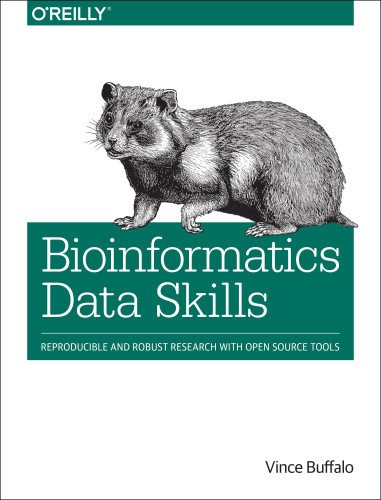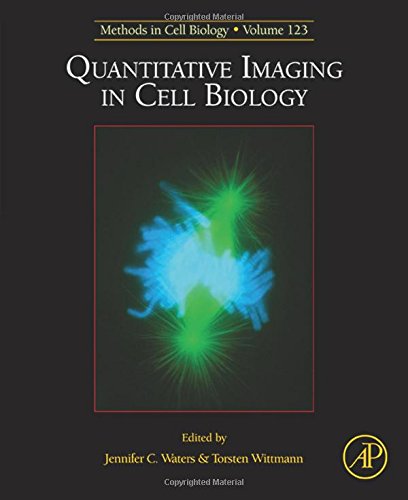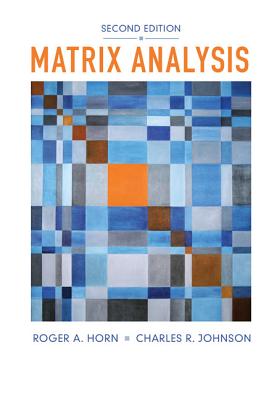The genus Salvia includes more than 700 species and hundreds of garden-worthy cultivars; given their extreme diversity of color and habit, salvias may truly be the ultimate collector\'s plant. Our publication of Betsy Clebsch\'s A Book of Salvias in 1997 prompted even greater interest in many handsome and newly available plants; Sutton\'s new book documenting more than 90 species provides a useful perspective from England and Europe.
A good text for the amateur bioinformatician or the journeyman looking to improve their overall approach. Not meant for the novice with little command line experience. The book provides an overview of many broad topics as opposed to specific tools, and the author does a good job of emphasizing reproducibility, which is surprisingly poorly practiced in the field. Recommended.
This new volume, number 123, of Methods in Cell Biology looks at methods for quantitative imaging in cell biology. It covers both theoretical and practical aspects of using optical fluorescence microscopy and image analysis techniques for quantitative applications.
The introductory chapters cover fundamental concepts and techniques important for obtaining accurate and precise quantitative data from imaging systems. These chapters address how choice of microscope, fluorophores, and digital detector impact the quality of quantitative data, and include step-by-step protocols for capturing and analyzing quantitative images. Common quantitative applications, including co-localization, ratiometric imaging, and counting molecules, are covered in detail. Practical chapters cover topics critical to getting the most out of your imaging system, from microscope maintenance to creating standardized samples for measuring resolution. Later chapters cover recent advances in quantitative imaging techniques, including super-resolution and light sheet microscopy. With cutting-edge material, this comprehensive collection is intended to guide researchers for years to come.
Covers sections on model systems and functional studies, imaging-based approaches and emerging studies
Chapters are written by experts in the field
Cutting-edge material
Well written text. An excellent chapter with mathematical examples on the optical design of the eye. A must for any reader interested in the topic.
Linear algebra and matrix theory are fundamental tools in mathematical and physical science, as well as fertile fields for research. This new edition of the acclaimed text presents results of both classic and recent matrix analysis using canonical forms as a unifying theme, and demonstrates their importance in a variety of applications. The authors have thoroughly revised, updated, and expanded on the first edition. The book opens with an extended summary of useful concepts and facts and includes numerous new topics and features, such as: - New sections on the singular value and CS decompositions - New applications of the Jordan canonical form - A new section on the Weyr canonical form - Expanded treatments of inverse problems and of block matrices - A central role for the Von Neumann trace theorem - A new appendix with a modern list of canonical forms for a pair of Hermitian matrices and for a symmetric-skew symmetric pair - Expanded index with more than 3,500 entries for easy reference - More than 1,100 problems and exercises, many with hints, to reinforce understanding and develop auxiliary themes such as finite-dimensional quantum systems
About the Author
M. J. Kidnie is a professor at the University of Western Ontario, Canada. She has edited several early modern works of prose and drama, and her research currently centres on live performance and adaptation.
SEAN CARROLL is a theoretical physicist at the California Institute of Technology, host of the Mindscape podcast, and author of From Eternity to Here, The Particle at the End of the Universe, and The Big Picture. He has been awarded prizes and fellowships by the National Science Foundation, NASA, the American Institute of Physics, and the Royal Society of London, among many others. He lives in Los Angeles with his wife, writer Jennifer Ouellette.
This book has most useful practical problem sets about atomic physics. All the problems are related to real experiments. One can learn both theories and experimental methods from them. Most importantly, this book provides lots of useful \"numbers\" that a physicists should memorize.
For physics graduate students, reading this book is a good way to review what you have learned in quantum mechanics class and to prepare for prelim qualifying exams.
The title is a stopper, and meant to be. The book is extremely sophisticated, detailed and convincing. 100 or even 50 years ago, no one could have made a case for plant intelligence, but dramatic research findings over the last decades have shown that plants--although they lack nervous systems--have exceedingly complex internal communication, mediated by chemicals (plant hormones, ions, etc.). Trewavas provides full details on the chemistry. There is communication even within cells, but what is impressive is the amount of communication and even decision-making that goes on in the whole plant. It has to decide how to grow toward light and away from shade, toward water and nutrients and away from sterile soil, etc. We once thought this was a simple, automatic process, but the reality has turned out to be as chemically and strategically complicated as decision-making in simple invertebrate animals.












